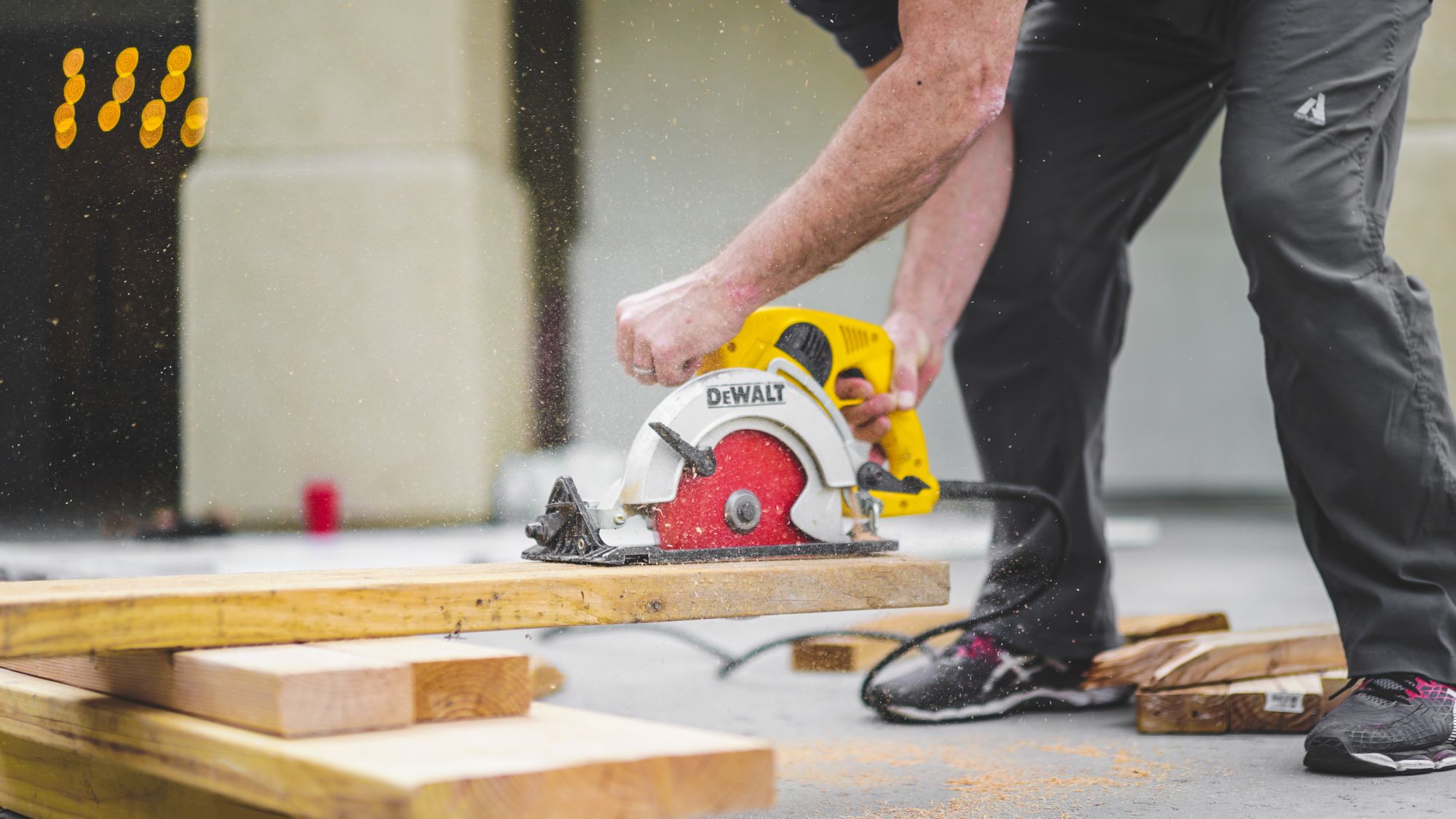Have you ever wondered about the impact of wood production on the environment? It's a valid concern, as wood production is a massive industry in the United States. But with the increasing demand for wood products, how can we ensure that wood production is both safe and sustainable?
Fortunately, guidelines and regulations are in place to promote safe and sustainable wood production practices. The latest guidelines focus on worker safety, forest management, and waste reduction. Additionally, the use of new technologies and manufacturing processes can further minimize the impact of wood production on the environment.
The use of sustainable wood products is becoming increasingly important to consumers. Therefore, by implementing sustainable wood production practices, businesses can meet consumer demand while also protecting the planet for future generations.

Implementing best practices for safe and sustainable wood production is essential for the success of your business. You can produce high-quality products that meet the latest guidelines and regulations by prioritizing sustainability and worker safety. In turn, this can help your business stand out in a competitive market and appeal to environmentally conscious consumers.
This article will delve into the best practices for safe and sustainable wood production.
So, let's explore the world of sustainable wood production and discover the best practices for protecting both workers and the environment.
Here's what we shall cover in this post:
- The Importance of Safe and Sustainable Wood Production
- Understanding the Benefits of Safe and Sustainable Wood Production
- Implementing Best Practices for Worker Safety
- Adopting Sustainable Forestry Practices
- Utilizing Eco-Friendly Wood Treatment Methods
- Developing a Sustainable Wood Supply Chain
- Monitoring and Evaluating Sustainable Wood Production Processes
- Conclusion
- Key Takeaways
The Importance of Safe and Sustainable Wood Production
As we continue to recognize the impact of human activities on the environment, the wood manufacturing industry needs to adopt safe and sustainable practices. The wood industry has an enormous impact on the environment, which is why it is crucial to implement sustainable practices that preserve the forest ecosystem.
Here are some key points that highlight the importance of safe and sustainable wood production:
- Preservation of Forest Ecosystem: One of the biggest concerns of the wood manufacturing industry is the depletion of forest reserves. Sustainable wood production ensures that the forests are preserved for future generations and that the ecological balance is maintained.
- Reducing Carbon Footprint: Wood is an important carbon sink, and sustainable wood production helps reduce the industry's carbon footprint. Using sustainable practices such as reforestation, the use of renewable energy, and the reduction of waste can help mitigate the effects of climate change.
- Economic Benefits: Sustainable wood production can benefit the industry positively. By implementing sustainable practices, the industry can create new business opportunities, generate new revenue streams, and improve market competitiveness.
- Social Responsibility: Sustainable wood production also involves considering the industry's social impact. This includes ensuring that the rights of forest-dependent communities are respected and that the industry's activities do not negatively impact their livelihoods.
- Compliance with Regulations: Some numerous regulations and certifications govern the wood manufacturing industry. By adopting safe and sustainable practices, companies can ensure compliance with these regulations and avoid the negative consequences of non-compliance.
- Consumer Demand: Consumers are increasingly becoming aware of the environmental impact of the products they purchase. Companies that implement sustainable wood production practices can capitalize on this trend by offering products that meet consumer demand for sustainable and environmentally-friendly products.
- Long-term Viability: Sustainable wood production ensures the long-term viability of the industry. By adopting sustainable practices, companies can ensure a reliable and sustainable supply of raw materials, which is essential for the continued growth and development of the industry.
Understanding the Benefits of Safe and Sustainable Wood Production
Safe and sustainable wood production practices can address these concerns while also offering various benefits.
Environmental Benefits
Safe and sustainable wood production practices are beneficial for the environment. By implementing sustainable forestry practices, the wood industry can ensure that the forests are not overexploited, leading to deforestation and habitat destruction. Sustainable forestry practices can also protect wildlife and biodiversity. Moreover, sustainable wood production practices can reduce greenhouse gas emissions and combat climate change.
The use of sustainable wood products in construction can also contribute to energy-efficient buildings and reduce the carbon footprint of the building sector.
Economic Benefits
Safe and sustainable wood production practices can also benefit the economy. Sustainable forestry practices can ensure the long-term availability of wood resources, which is essential for the wood industry's sustainability.
Sustainable wood production practices can also increase the demand for wood products, leading to economic growth and job creation in the wood industry. Moreover, sustainable wood production practices can reduce the industry's dependence on fossil fuels and other non-renewable resources, leading to cost savings.
Social Benefits
Safe and sustainable wood production practices can also have social benefits. By implementing safe working conditions and providing training and development opportunities for workers, the wood industry can create a positive work environment and promote the well-being of its workforce.
Additionally, sustainable wood production practices can also promote social equity by ensuring the fair distribution of benefits and opportunities across different communities and stakeholders.
Consumer Benefits
Safe and sustainable wood production practices can also benefit consumers. Sustainable wood products are typical of high quality, durable, and aesthetically pleasing, making them desirable in various applications, including construction and furniture.
Consumers can also benefit from the eco-friendliness of sustainable wood products, reducing their consumption choices' environmental impact.
Implementing Best Practices for Worker Safety
Worker safety is critical to any manufacturing process, and wood production is no exception. Woodworking machinery can be dangerous, and workers face numerous hazards on a daily basis. Implementing best practices for worker safety is crucial to creating a safe working environment and minimizing the risk of accidents and injuries.
Here are some key points to consider when implementing best practices for worker safety in wood production:
- Conduct Regular Safety Audits: Regular safety audits are essential to ensure that the wood production process is safe for workers. A safety audit involves reviewing the manufacturing process, identifying hazards, and implementing safety measures to address them. Regular safety audits can help to identify and correct safety issues before they lead to accidents or injuries.
- Provide Proper Training: Proper training is critical to ensuring workers know how to safely use woodworking machinery. Employers should provide comprehensive training to all workers who will operate machinery, including how to properly use and maintain the machinery and identify and respond to safety hazards.
- Use Appropriate Personal Protective Equipment (PPE): Employers should provide workers with the appropriate PPE, including safety glasses, earplugs, gloves, and respiratory protection. PPE should be properly fitted and regularly inspected to ensure that it provides adequate protection.
- Maintain Machinery: Regular maintenance of woodworking machinery is critical to ensuring it is safe. Machinery should be inspected regularly, and any issues should be addressed promptly to avoid accidents or injuries.
- Promote Good Housekeeping: Good housekeeping practices are essential to maintaining a safe working environment. Employers should encourage workers to keep their work areas clean and free of clutter, which can create safety hazards.
- Encourage Reporting of Safety Concerns: Employers should encourage workers to promptly report safety concerns and hazards. Workers should feel comfortable reporting safety issues without fear of retaliation.
- Conduct Regular Safety Meetings: Regular safety meetings can help to keep workers informed about safety issues and provide an opportunity to discuss safety concerns. Employers should encourage workers to participate in safety meetings and provide them with the necessary training and resources to do so effectively.
- Implement a Safety Management System: A safety management system can help employers to identify and manage safety hazards in the wood production process. The system should include policies and procedures for identifying and addressing safety hazards and mechanisms for reporting safety concerns.
- Create a Culture of Safety: Employers should strive to create a culture of safety in the workplace. This includes promoting safety as a top priority, encouraging workers to be safety-minded, and recognizing and rewarding safe behavior.
- Stay Up-to-Date with Safety Regulations: Employers should stay up-to-date with safety regulations and ensure that they are in compliance with all relevant regulations. Compliance with safety regulations is essential to creating a safe working environment for all workers.
Promoting Biodiversity and Ecosystem Health in Wood Production
Sustainable Forestry Practices
One of the key ways to promote biodiversity and ecosystem health in wood production is through sustainable forestry practices. This involves the use of methods that minimize the impact on forest ecosystems, such as selective logging, reduced impact logging, and certification schemes such as the Forest Stewardship Council (FSC).
Sustainable forestry practices ensure that forests are managed to balance economic, social, and environmental factors.
Forest Restoration
Another way to promote biodiversity and ecosystem health in wood production is through forest restoration. This involves the process of actively restoring degraded or deforested areas to their original state.
This can be achieved through planting new trees, controlling invasive species, and implementing soil conservation measures. Forest restoration can help to improve the quality of the soil, water, and air, and provide habitats for a range of plant and animal species.
Use of Alternative Materials
The use of alternative materials to wood can also promote biodiversity and ecosystem health in wood production. These materials can include bamboo, cork, and other fast-growing species. These materials have a lower impact on the environment and can be harvested sustainably without compromising biodiversity.
Responsible Sourcing
Another important factor in promoting biodiversity and ecosystem health in wood production is responsible sourcing. This involves the use of wood products that have been harvested from sustainably managed forests.
Companies can ensure responsible sourcing by working with suppliers who have sustainable forestry practices in place and by ensuring that they are compliant with relevant certifications such as the FSC.
Education and Awareness
Finally, education and awareness are key in promoting biodiversity and ecosystem health in wood production. By educating consumers and stakeholders about the importance of sustainable forestry practices and responsible sourcing, companies can help to promote a greater understanding of the environmental impact of wood production.
This can lead to greater demand for sustainably sourced wood products, which in turn can encourage more companies to adopt sustainable practices.
Public Awareness and Education on Sustainable Wood Production
Public awareness and education play a significant role in promoting sustainable wood production. Consumers, policymakers, and stakeholders need to be informed about the importance of sustainable forest management and the potential impacts of unsustainable wood production practices.
Here are some points to consider when discussing public awareness and education on sustainable wood production:
- Importance of education: It is crucial to educate the public about the importance of sustainable wood production practices. This can help to reduce the demand for unsustainable wood products, create awareness of sustainable alternatives, and promote sustainable forest management.
- Sustainable forest management: Public education should emphasize the benefits of sustainable forest management, which involves managing forests to meet the needs of the present while ensuring that future generations can also benefit from these resources.
- Certification schemes: Education can also inform the public about the importance of certification schemes such as the Forest Stewardship Council (FSC) and the Programme for the Endorsement of Forest Certification (PEFC), which aim to promote sustainable forest management practices.
- Labeling and traceability: Education can also promote the importance of labeling and traceability of wood products to ensure that consumers can make informed choices about the wood products they purchase.
- Importance of biodiversity: Public education can also promote the importance of biodiversity conservation and the role that sustainable wood production can play in protecting and enhancing biodiversity.
- Sustainable wood alternatives: Educating the public about sustainable wood alternatives such as bamboo, recycled wood, and engineered wood products can help reduce the demand for unsustainable wood products.
- Media and advertising: The media and advertising can also play a crucial role in promoting sustainable wood production practices. Advertisements and media campaigns can help raise public awareness of sustainable wood production and the importance of responsible wood consumption.
- Collaboration: Collaboration between government, industry, and NGOs can also help promote public awareness and education on sustainable wood production. This collaboration can help develop effective education campaigns and policies to promote sustainable wood production.
Minimizing Environmental Impacts of Wood Production
Here are some ways to minimize the environmental impact of wood production:
- Sustainable forestry practices: The first step in minimizing the environmental impact of wood production is to use sustainable forestry practices. This includes replanting trees and using selective cutting methods to maintain forest health.
- Use of recycled materials: Another way to minimize the environmental impact of wood production is to use recycled materials. This can include using recycled wood, plastic, and metal in production.
- Efficient use of resources: Wood production can be resource-intensive, so it is important to use resources efficiently. This includes minimizing waste and using energy-efficient production methods.
- Reduce emissions: Wood production can contribute to air pollution, so it is essential to minimize emissions. This can be done by using energy-efficient equipment and minimizing the use of harmful chemicals.
- Water conservation: Wood production can be water-intensive, so it is important to conserve water wherever possible. This can include using water-efficient equipment and implementing water recycling programs.
- Responsible waste management: Wood production generates waste, including sawdust and wood chips. Responsible waste management practices can include composting, recycling, and properly disposing of hazardous materials.
- Certification and labeling: To ensure that wood products are environmentally friendly, it is important to use certification and labeling programs. These programs can include Forest Stewardship Council (FSC) certification and labeling, which ensures that wood products are sustainably produced.
- Eco-friendly packaging: Wood products are often packaged in plastic or other non-biodegradable materials. Using eco-friendly packaging materials can reduce the environmental impact of wood production.
- Lifecycle assessment: A lifecycle assessment is an evaluation of the environmental impact of a product throughout its entire lifecycle, from production to disposal. This can help identify areas where improvements can be made to minimize environmental impact.
- Collaboration with suppliers: Collaboration with suppliers can help ensure that wood products are produced in an environmentally responsible way. This can include working with suppliers to implement sustainable forestry practices and reduce environmental impact.
Adopting Sustainable Forestry Practices
Sustainable forestry practices are essential for the long-term health of the forest, wildlife, and the ecosystem in general. It involves the use of sustainable methods to harvest timber and ensure that the forest is regenerated and preserved for future generations.
The forest is an essential natural resource that provides a wide range of benefits, including clean air and water, biodiversity, and renewable energy. Therefore, adopting sustainable forestry practices is crucial in ensuring that the forest remains a healthy and productive ecosystem.
The Importance of Adopting Sustainable Forestry Practices
- Conservation of the forest ecosystem
Adopting sustainable forestry practices helps conserve the forest ecosystem, which is crucial for the survival of many species of plants and animals. By using sustainable harvesting methods, the forest can regenerate, and wildlife can thrive. Sustainable forestry practices also help reduce soil erosion, which can negatively impact water quality and the overall health of the forest.
- Climate change mitigation
Forests are crucial in mitigating the effects of climate change by sequestering carbon dioxide from the atmosphere. Sustainable forestry practices can help enhance the forest's carbon sequestration capacity by ensuring that the forest is healthy and growing. Additionally, sustainable forestry practices can help reduce greenhouse gas emissions by promoting renewable energy and reducing the use of fossil fuels in the forest sector.
Best Practices for Sustainable Forestry
- Regeneration
One of the best practices for sustainable forestry is to ensure that the forest is regenerated after harvesting. This can be achieved by planting new trees or allowing natural regeneration. Using proper silvicultural techniques can help ensure that the forest regenerates quickly and in a healthy manner.
- Reduced Impact Logging
Reduced-impact logging is a sustainable harvesting method that involves the use of techniques that minimize the impact of harvesting on the forest. This includes the use of smaller equipment, directional felling, and the construction of temporary roads.
- Forest Certification
Forest certification is a process that involves the independent verification of sustainable forest management practices. It assures consumers that the products they buy come from a sustainably managed forest.
Certification schemes such as the Forest Stewardship Council (FSC) and the Programme for the Endorsement of Forest Certification (PEFC) are widely recognized and can help to promote sustainable forestry practices.
- Community Involvement
Community involvement in forest management is an essential component of sustainable forestry practices. This involves consultation and collaboration with local communities in forest management decision-making processes. It helps to ensure that the forest is managed in a way that is consistent with the values and aspirations of the local communities.
Utilizing Eco-Friendly Wood Treatment Methods
- Thermal modification: This process involves heating wood to high temperatures, which changes the chemical and physical properties of the wood. This results in improved dimensional stability, durability, and resistance to decay and insects. The process is carried out without the use of chemicals, making it a sustainable and eco-friendly option.
- Acetylation: This process involves treating wood with acetic anhydride, which modifies the wood's cell structure and makes it more resistant to moisture and fungal decay. The process is carried out without the use of toxic chemicals, making it a sustainable and eco-friendly option.
- Borate treatment: This method involves treating wood with boron compounds, which are natural minerals that are not harmful to the environment. The borates penetrate the wood, making it resistant to decay, insects, and fire.
- Vegetable oil-based treatments: This method involves using vegetable oils, such as linseed or soybean oil, to treat wood. The oil penetrates the wood and protects it from decay and insects. This method is eco-friendly as it does not use toxic chemicals.
- Biocides from natural sources: This method involves using biocides derived from natural sources, such as essential oils, to treat wood. The biocides are effective against decay and insects and are safe for the environment.
- Pressure treatment: This method involves treating wood with chemicals, such as copper-based compounds, under pressure. The process forces the chemicals deep into the wood, making it resistant to decay and insects. This method is effective but should be done responsibly to minimize environmental impact.
- Carbonization: This method involves heating wood without oxygen, resulting in a blackened surface. The process increases the wood's durability and resistance to decay and insects. The method is eco-friendly as it does not use chemicals.
Reducing Waste and Increasing Efficiency in Wood Production
Efficiency and waste reduction are critical elements of any production process. These factors are especially important for wood production because of the industry's environmental impact.
Reducing waste and increasing efficiency can help to conserve resources, reduce environmental pollution, and improve profits.
Use of computer-aided design and manufacturing (CAD/CAM) systems: CAD/CAM systems can help to reduce waste and increase efficiency by improving the precision and accuracy of production.
These systems allow for accurate measurement and cutting of wood, reducing the amount of material wasted during production. They also help to automate repetitive tasks, which increases efficiency and reduces the time required to complete production tasks.
Adoption of lean manufacturing principles: Lean manufacturing principles focus on eliminating waste and increasing efficiency by streamlining production processes.
This involves identifying and eliminating activities that do not add value to the production process. For example, reducing inventory and minimizing the distance that raw materials and finished products travel can help reduce waste and increase efficiency.
Implementation of a waste management system: A waste management system can help to reduce waste by separating materials that can be reused or recycled from those that cannot.
This system can also help ensure that waste is disposed of properly, reducing environmental impact. Recycling waste materials, such as sawdust and wood chips, can also create new revenue streams for the company.
Utilization of by-products: By-products from the production process, such as sawdust and wood chips, can be used to produce other products. For example, sawdust can be used to create particleboard or fuel pellets.
Wood chips can be used for mulch, animal bedding, or fuel. By utilizing these by-products, waste is reduced, and revenue is generated.
Use of energy-efficient equipment: Energy-efficient equipment can help to reduce energy consumption, which reduces costs and minimizes the impact on the environment.
Examples of energy-efficient equipment include saws, kilns, and boilers. These types of equipment use less energy to produce the same amount of product as older, less efficient models.
Developing a Sustainable Wood Supply Chain
Here are some key points to consider when developing a sustainable wood supply chain:
Sustainable Sourcing: The first step in creating a sustainable wood supply chain is to ensure that wood is sourced from responsible and sustainable sources. This can include certification from third-party organizations such as the Forest Stewardship Council (FSC) or the Programme for the Endorsement of Forest Certification (PEFC).
These certifications ensure that forests are managed to protect the environment, respect the rights of indigenous peoples and local communities, and support economic growth.
Efficient Transportation: Transporting wood products from the forest to the factory can have a significant environmental impact. It is, therefore, essential to ensure that transportation is as efficient as possible, with minimal fuel consumption and emissions.
This can include optimizing transportation routes, using low-emission vehicles, and reducing packaging waste.
Waste Reduction: Wood production can generate significant amounts of waste, including sawdust and wood chips. It is important to implement strategies to reduce waste and maximize the use of wood resources. This can include using waste wood for energy production or recycling it into other products.
Social Responsibility: A sustainable wood supply chain must also consider the social impact of production on local communities. This includes respecting workers' rights, providing safe working conditions, and ensuring fair wages and benefits.
Traceability: To ensure that wood is sourced from sustainable sources, it is important to implement a traceability system that tracks wood products from the forest to the factory. This can include using electronic tracking systems or implementing supply chain audits.
Recycling and Reuse: The sustainable wood supply chain should also focus on recycling and reusing wood products. This can include using recycled wood in new products, reusing wood packaging, or recycling wood waste into energy.
Certification: Finally, certification can help ensure a sustainable wood supply chain. This includes certifications such as FSC and PEFC and certifications for sustainable manufacturing processes, such as the Sustainable Forestry Initiative (SFI).
Monitoring and Evaluating Sustainable Wood Production Processes
Define sustainability goals and objectives
The first step in monitoring and evaluating sustainable wood production processes is to define the sustainability goals and objectives for the company.
This can include reducing carbon emissions, minimizing waste, and promoting biodiversity. The goals should be specific, measurable, achievable, relevant, and time-bound (SMART) to ensure they are effective.
Establish performance indicators
Performance indicators are metrics used to measure progress toward sustainability goals. They should be specific, quantitative, and easy to measure. Examples of performance indicators include the percentage of recycled materials used in production, the number of trees replanted, and the amount of waste generated per unit of product.
Collect and analyze data
Data collection is critical to monitoring and evaluating sustainable wood production processes. Companies should collect data on performance indicators, such as energy consumption, water use, and waste generation. The data can be used to identify improvement areas and evaluate the effectiveness of sustainability initiatives.
Use life cycle assessment
A life cycle assessment (LCA) is a tool used to evaluate the environmental impacts of a product or process throughout its entire life cycle. LCAs can help companies identify areas where improvements can be made in the production process to reduce environmental impacts.
For example, an LCA can help identify opportunities to reduce energy consumption, reduce greenhouse gas emissions, and minimize waste.
Conduct audits
Audits are an essential part of monitoring and evaluating sustainable wood production processes. Companies should conduct regular audits to ensure that sustainability goals are being met and to identify areas where improvements can be made.
Audits can include inspections of production facilities, interviews with staff, and reviews of production records.
Implement corrective actions
When sustainability goals are not being met, companies should implement corrective actions to address the issues. Corrective actions may include changing production processes, reducing waste, and increasing efficiency. It is essential to track the effectiveness of corrective actions to ensure they successfully improve sustainability.
Communicate results
Communication is a critical aspect of monitoring and evaluating sustainable wood production processes. Companies should communicate sustainability results to stakeholders, including customers, employees, and investors. By sharing sustainability performance information, companies can build trust and increase transparency.
How Deskera Can Assist You?
Deskera MRP allows you to closely monitor the manufacturing process. From the bill of materials to the production planning features, the solution helps you stay on top of your game and keep your company's competitive edge.

Deskera ERP and MRP system can help you:
- Manage production plans
- Maintain Bill of Materials
- Generate detailed reports
- Create a custom dashboard
Deskera ERP is a comprehensive system that allows you to maintain inventory, manage suppliers, and track supply chain activity in real-time, as well as streamline a variety of other corporate operations.
Deskera Books enables you to manage your accounts and finances more effectively. Maintain sound accounting practices by automating accounting operations such as billing, invoicing, and payment processing.
Deskera CRM is a strong solution that manages your sales and assists you in closing agreements quickly. It not only allows you to do critical duties such as lead generation via email, but it also provides you with a comprehensive view of your sales funnel.
Deskera People is a simple tool for taking control of your human resource management functions. The technology not only speeds up payroll processing but also allows you to manage all other activities such as overtime, benefits, bonuses, training programs, and much more. This is your chance to grow your business, increase earnings, and improve the efficiency of the entire production process.
Conclusion
Utilizing the best practices for safe and sustainable wood production is crucial for the longevity and success of the industry. With the increasing demand for wood products, it is important to ensure that the production process is carried out safely and sustainably.
By implementing best practices for wood production, companies can minimize their environmental impact, ensure worker safety, and provide consumers with high-quality products. Best practices include responsible sourcing of wood, efficient use of resources, and safe handling and disposal of chemicals and waste.
Additionally, companies should strive to improve their energy efficiency, reduce emissions, and incorporate sustainable practices throughout their operations. Companies need to stay up-to-date with the latest technological advancements, regulations, and industry standards to achieve this.
By prioritizing sustainability and safety in their production processes, companies can enhance their brand reputation, attract socially conscious consumers, and contribute to a more sustainable future for all.
Key Takeaways
- Responsible sourcing of wood is an essential part of sustainable wood production.
- Efficient use of resources, such as water and energy, can significantly reduce the environmental impact of wood production.
- Safe handling and disposal of chemicals and waste are critical for protecting the health and safety of workers and the environment.
- Companies should strive to improve their energy efficiency, reduce emissions, and incorporate sustainable practices throughout their operations.
- Implementing the latest technological advancements, regulations, and industry standards is essential for safe and sustainable wood production.
- Collaboration and partnerships between stakeholders, suppliers, customers, and regulatory agencies are key to ensuring sustainable and safe wood production.
- Sharing knowledge, resources, and expertise throusgh partnerships can help develop innovative solutions and practices for the industry.
- Prioritizing sustainability and safety in production processes can enhance a company's brand reputation and attract socially conscious consumers.
- Sustainable wood production can contribute to a more sustainable future for all by reducing deforestation and promoting responsible land management.
- Best practices for sustainable wood production can include using recycled or reclaimed wood and promoting the use of certified sustainable wood products.
Related Articles














